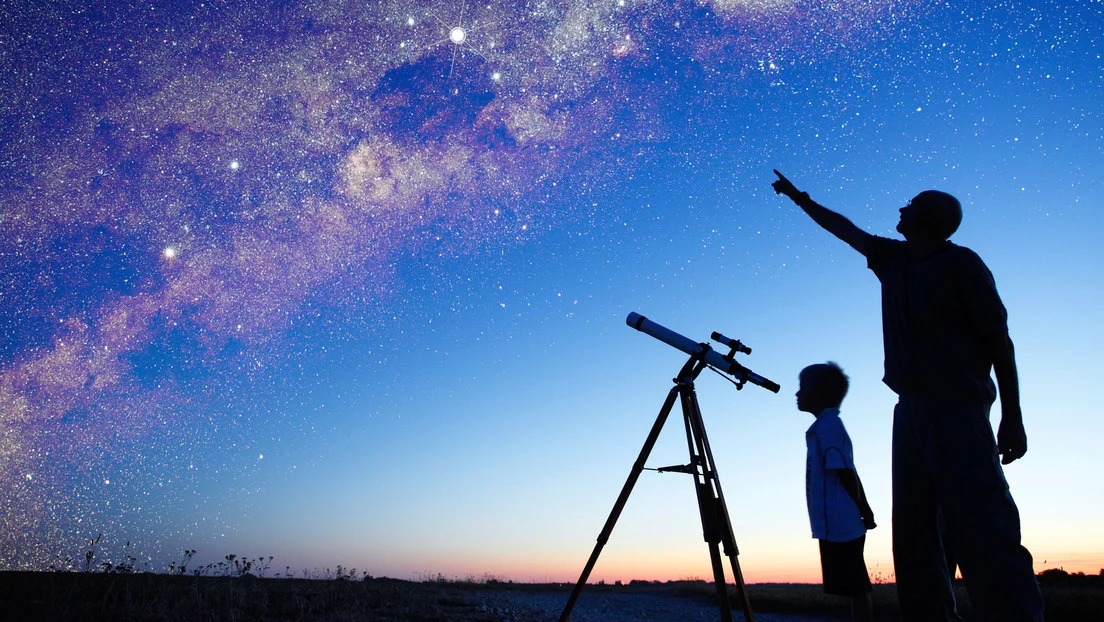 The 2022 astronomical calendar is projected to be packed with cosmic phenomena such as meteor showers, lunar and solar eclipses, and even a full supermoon. Here are some of the most important dates to watch out for.
The 2022 astronomical calendar is projected to be packed with cosmic phenomena such as meteor showers, lunar and solar eclipses, and even a full supermoon. Here are some of the most important dates to watch out for.
Quadrantids meteor shower
This annual meteor shower typically begins between mid-December and lasts until mid-January, but its peak will occur overnight from January 2-3, according to the American Meteor Society. Quadrantids, best seen from the Northern Hemisphere under good conditions like clear skies, are known to often produce bright fireballs.
Rain of the Lyrid
It is another meteor shower, of medium intensity, which occurs between mid and late April, but its peak in 2022 will occur on the night of April 21-22. In this show you can also see fireballs caused by the disintegration of meteors in the atmosphere. The Lyrid rain is best seen from the northern hemisphere, although to a lesser extent it can also be seen from the southern hemisphere.
Solar eclipse
According to the Timeanddate portal, the first solar eclipse of 2022 will take place on April 30, but it will only be partial and can be observed from the southern part of South America, parts of Antarctica and over the Pacific and Atlantic oceans.
It is a high intensity meteor shower, observable especially from the southern hemisphere of the planet and in areas near the equator. Its activity will begin on April 15 and will last until May 27, with its peak on the night of May 4-5.
This phenomenon will occur on the night of May 15-16 and will be visible from North and South America, Europe, Africa and part of Asia.
This phenomenon occurs when the phase of the full moon coincides with the satellite's closest approach to Earth, so the moon looks much larger than usual. Earth Sky reports that this year four 'supermoons' will occur, in May, June, July and August, but the one that will take place on July 13 will be the one that occurs closest to our planet.
It is another meteor shower of strong intensity that will be best seen from the southern hemisphere, although they are also usually visible in the north, but with less intensity. The phenomenon will be active between mid-July and August, reaching its maximum peak on the night of July 29-30.
The Perseids are the most famous meteor shower and next year it will peak between the night of August 11-12. This phenomenon is visible from the northern hemisphere and will last from mid-July to September 1.
Another medium intensity meteor shower, which can sometimes reach high intensity activity. The Orionids will peak on the night of October 20-21, although they will be activated from September 26.
A second partial solar eclipse will occur on October 25 and will be visible from most of Europe, North Africa, the Middle East and western Asia.
They are a long-lasting meteor shower that reaches several peaks during its period of activity and a large number of fireballs are usually produced. Its peak will take place on the night of November 4 to 5, although it will be active between the end of September and the beginning of December.
Total lunar eclipse
On the night of November 7 to 8, the second total lunar eclipse of the year will take place, which will be visible from Asia, Australia, North America, much of South America and some regions of Europe.
This phenomenon is similar to the southern taurids, but its activity begins a few weeks later. There seems to be a 7-year periodicity in terms of the increase in fireballs in coincidence between both phenomena, and in 2022 an increase in the average number of visible meteors could be observed again. The peak of the Northern Taurids will take place on the night of November 11-12.
The peak of this phenomenon will occur on the night of November 17 to 18, with a maximum of around 15 meteors per hour.
They are usually the strongest meteor shower of the year and the only one that registers appreciable activity before midnight. Geminids are usually bright and intensely colored and are visible from the northern hemisphere, although they can also be seen from the south, although with less intensity. Its activity will begin on November 19 and will last until December 24, with its peak on the night of December 13 to 14.
The peak of this meteor shower is recorded just before Christmas, although with less intensity than the Geminids. This phenomenon is visible only from the northern hemisphere and its apogee will occur on the night of December 21-22. (Text and photo: RT)